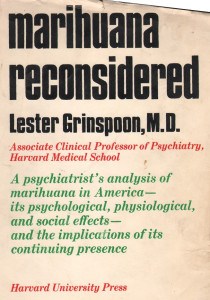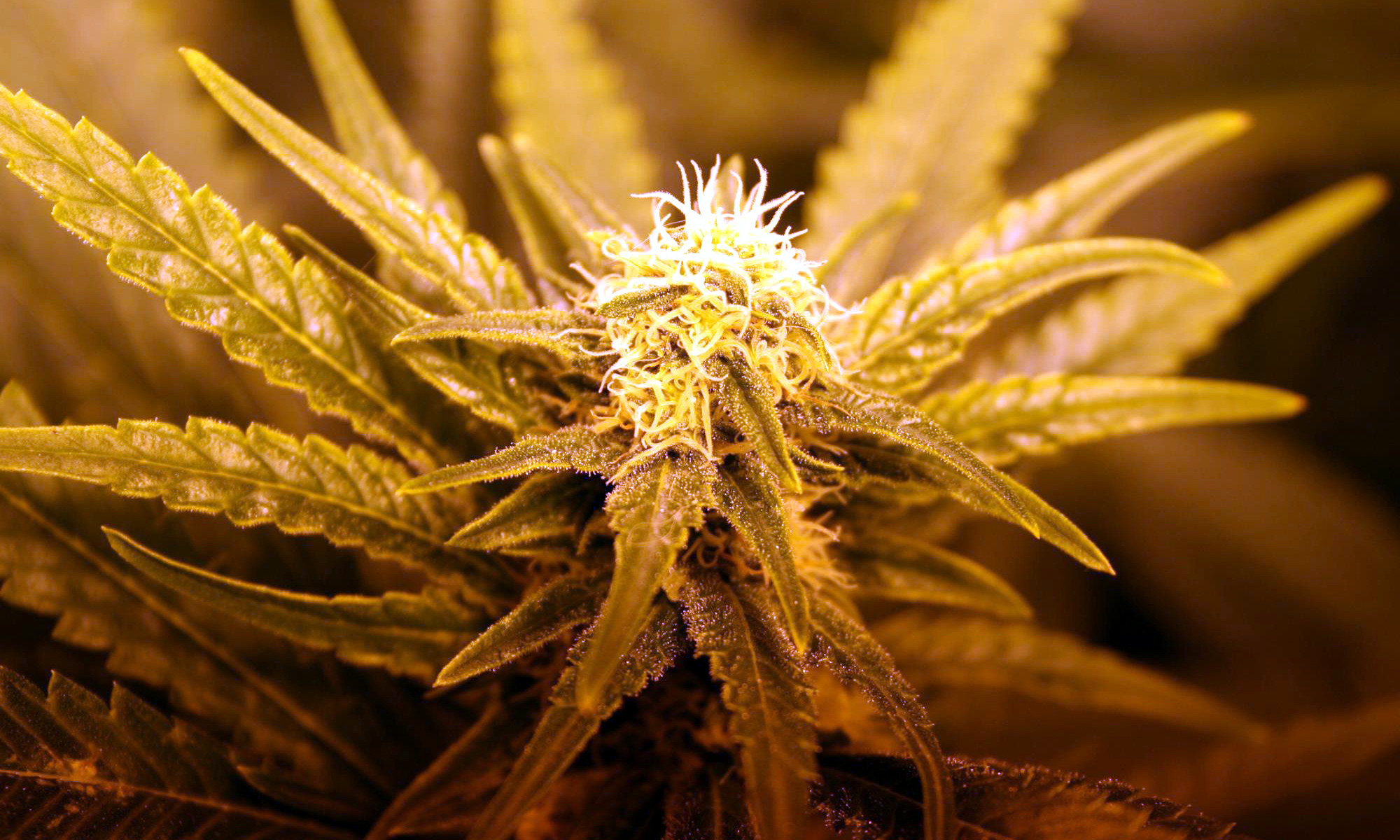
There are all kinds of awards in professional life. For one like myself, the theme is a bit repetitive, such as a particularly good crop or some new well-crafted flower to sample. Every once in a while, really helping someone better their life in any manner is a real high point.
When I recently had the opportunity to acquire a 1st edition of Dr. Lester Grinspoon’s 1971 Marihuana Reconsidered that was in excellent condition, I did not let it pass by. Over a series of mini reports, we will look into the message shared by Dr. Grinspoon, discuss notable points of interest and relevant predictions and comparisons.
Introduction
The book begins with general information to provide context and quickly delves into history, cultural attitudes and policy. It is also full of little surprises. When discussing tetrahydrocannabinol on page five, Dr. Grinspoon writes, “It is possible that other cannabinol derivatives do have pharmacological activity”. This statement immediately prompted my realization that D.r Grinspoon suggested CBD benefits in 1970!
A great deal of the introduction addresses clinical confusion and the difficulties surrounding cannabis medicine stigma and flawed research. In the book clearly outlining just how muddled the whole issue had become by then, I was reminded of some of the positions I see taken by a segment of clinicians that there are no supporting studies, so, no it does not work. Since the anecdotal evidence is so prevalent for many cannabis treatable conditions, such contrary positions always surprise me.
Grinspoon writes on page eight, “Of the body of knowledge known as modern medicine, the clinical segment particularly was largely derived from observations and studies which could hardly be considered controlled, rigorous, or even scientific.” The statement left me wondering just how relevant the statement is today versus in 1970 when Grinspoon penned it. An insight into the problems around cannabis, as well as a few interesting questions, are found in and around the introduction. At the end of the introduction, our confusion and frustration at the apparent madness being explained before us are brought gently back down with the last line penned on page nine: “It is still better to light one candle than to curse the darkness.”
Yes, yes it is.
Chapter One: The History of Marihuana in the United States
In the first chapter, Grinspoon immediately addresses the love-hate relationship between cannabis and United States interests. He goes on to explain in great detail the history of hemp from George Washington to the Federal Bureau of Narcotics (FBN) and the significance of one Mr. Harry J Anslinger. Myths surrounding George Washington and hemp are as old as he would be now. Did they smoke it or use it for medicinal purposes? Did they grow it for flower or just for hemp fibre and feed? I will not attempt to answer any of those questions, but I will make note of a very relevant note made by George Washington in his diary where he writes on page 12, “Aug 7, 1765: Began to separate the male from the female hemp, rather too late”. The only reason I know to separate male and female cannabis is for increased flower mass by not pollenating. I am unaware of a different reason for hemp to be separated should one exist.
Discussed along with Washington separating male and female plants were some studies that claimed separating the sexes was a waste of effort as it did not increase resin production. This reasoning seems to indicate a failure in realizing that it is the increase in flower production from denying pollination that is the sole reason to separate male from female plants.
The discussed decline in industrial hemp was a multi-factor, downward spiral tied to several changing industries and growing offshore competition offering cheaper product. By the time the idea of a drug war was beginning, hemp was on a steep decline a just few strides ahead of the cotton industry.
By the 1930s, the FBI had placed cannabis smoking in their sights and, despite credible evidence to the contrary, began a media campaign claiming cannabis use was responsible for most of the violent crime that occurred. FBI propaganda surrounding cannabis use involved such terms as “The Killer Drug Marihuana”. The propaganda was so effective that in August 1937, House Resolution (H.R.) 6906 was brought before the House of Representatives. Also known as The Marihuana Tax Act, the legislation imposing a tax on cannabis use had no difficulty being passed in the House.
The main reason The Marihuana Tax Act passed so easily was due in no small part to several years of negative and outright false claims and reports by the FBI. Additionally, the presentation of the bill claimed that it would channel cannabis into industrial and medical research hands and “discourage the current and widespread undesirable use of marihuana by smokers and drug addicts”. (Page 21)
The majority of the testimony for H.R. 6906 was negative, comprised mostly of newspaper stories and supportive mythology. The mythology went so far as to share a long believed false twist in Homer’s works, claiming the Persian assassins of which he wrote derived the name assassin from hashish. There was one man, however, who sought to be the voice of reason: Dr. W. C. Woodward, Legislative Council for the American Medical Association.
Being the voice of reason did not go well for the good doctor. He was harassed and ridiculed, presented at length with newspaper stories and being asked to explain the propaganda. Ultimately, his efforts proved to be a waste of time. Those who were meant to listen instead sought to dismiss the testimony. In the end, they claimed Dr. Woodward was uncooperative and should have arrived with “constructive proposals rather than criticisms”. (Page 26)
Not all were willing to simply be told cannabis was evil and leave it at that. Mayor Fiorello La Guardia championed a sensible approach to cannabis and commissioned the La Guardia report in 1938 with the help of the New York Academy of Medicine. Shortly before its release in 1943, Colonel J. M. Phalen, a Military Surgeon editor, printed an editorial called “The Marihuana Bugaboo”, in which he claimed cannabis was no more harmful than tobacco.
The La Guardia report was widely and strongly criticized. Harry Anslinger was very vocal in his firm belief that cannabis was evil and should be eradicated. His voice was so strong that both the League of Nations drug expert and the AMA denounced the La Guardia report. In April 1945, the Journal of the American Medical Association posted an editorial claiming the LaGuardia report was causing harm. The editorial claimed that the report was causing damage to law enforcement and advised public officials to disregard it and treat cannabis as a menace.
The desire of the American Medical Association to stay in close alignment to the Federal Bureau of Narcotics is a testament to just how powerful the opposition to cannabis medicine was. Going back to the early 1930s, you can find Anslinger’s name in and around cannabis falsehoods and fear almost everywhere they arise. Even today, we are still dealing with the fallout of his less than honourably motivated actions. Harry J. Anslinger truly is the father of cannabis prohibition.
Note: All page references apply to the 1st pressing of the Harvard University Press release of the book.
